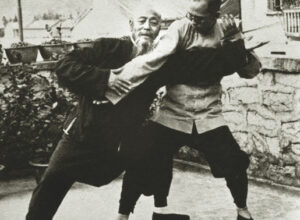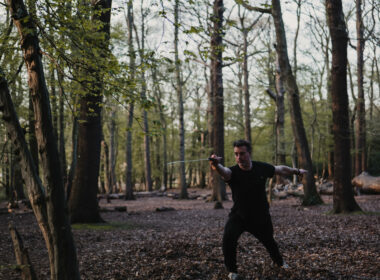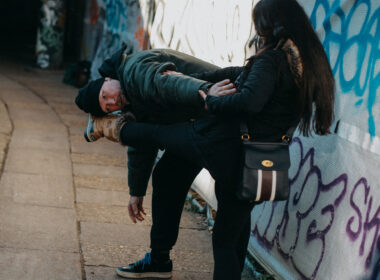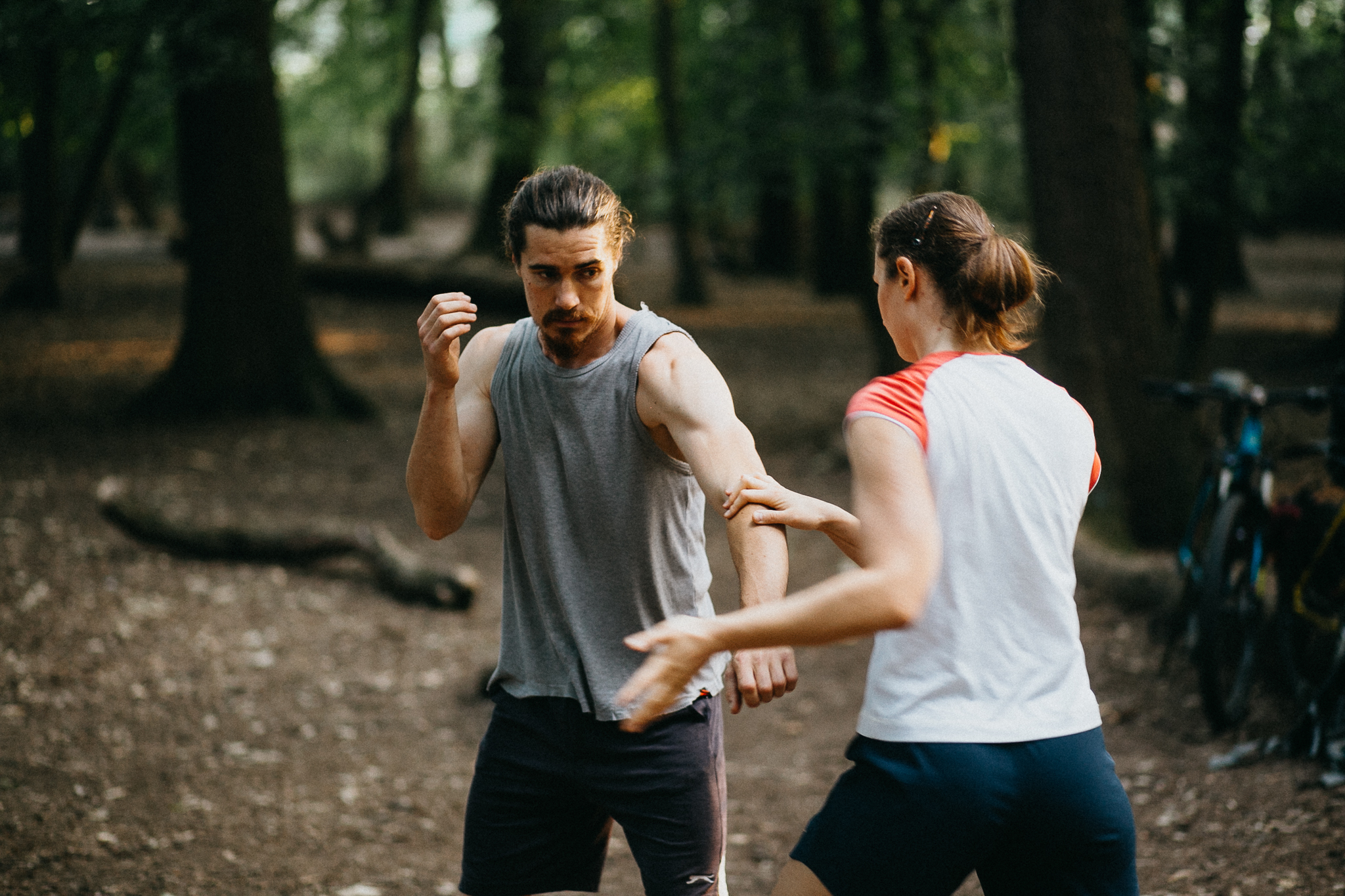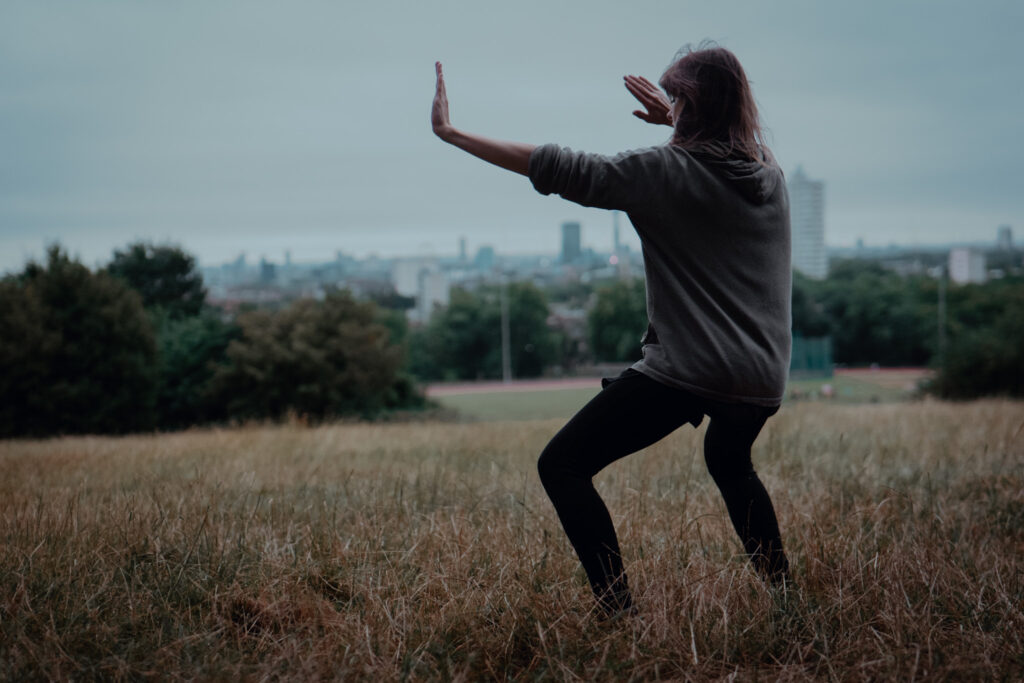If you don’t want to feel vulnerable and have full confidence in your ability to defend yourself, you should have some abilities to fight at close quarters. In Tai Chi these skills are largely trained in a module called striking hands or pushing hands.
There are a variety of exercises we practice in pairs that will build up different qualities that become very useful in close quarter combat scenarios.
Fundamentally it’s training that conditions your deeper and more primal nervous system responses to different attacks. We basically practice meeting all different kinds of close quarter forces using minimum force to neutralise and then whole body force to counter. Over time our body becomes very sensitive to any movements we can feel in an opponent and we learn to detect what they are likely to do. And when they do it the faster pathways of our nervous system implement the most efficient neutralisation and then counter.
Responses have to be trained so that they simply become a natural expression of ourselves, because in self defence at close quarters there isn’t much time for slower, intellectual thinking, we need more primal intuitive responses, that have been well trained.
Some exercises combine the training with footwork skills, balance training, core strength work as well as whole body strength building. They can be aerobically demanding too.
As well as the core exercises we can also practice in a freestyle manner, where we can challenge and help each other improve skills in a spontaneous environment with no fixed patterns.
There are also competitions where you can try your skills against other people from other clubs.
There are eight types of Pushing Hands. Five are ‘fixed step’, meaning that the sole of the front foot may be raised or lowered provided the heel rests on the ground, but that no other movement of the feet is permitted. The other three styles are ‘moving step’ and develop our ability to move forwards, backwards and to the side in a nimble manner while applying the Pushing Hands Techniques.
There are three main stages of development
a) The first and highest stage is where the sensitivity of our hands is such that our opponent’s intentions are an open book to us while our intentions are a source of mystery to him. He will be completely frustrated, unable to attack or defend;
b) The second stage is where our sensitivity is not fully developed and so we can only determine our opponent’s intentions at the last minute and so may or may not be able to react in time to counter his attack;
c) The third stage is where our sensitivity is so poor that we cannot detect our opponent’s attack at all. This attack will then be successful and we will be defeated. If we are to be genuine Tai Chi masters, we must be able to apply and combine the Thirteen Tactics freely and fluently. Practicing
Pushing Hands with such a master is like rowing a boat in a rough sea, since our actions will always be beyond our control. Our attacks would be too slow and too obvious to be effective, while our defence would also be inadequate to respond to his attacks. In every martial art knowledge of technique, in itself, is useless; constant, thoughtful, concentrated practice is essential. Only in this way can we reach the first stage in Pushing Hands.






